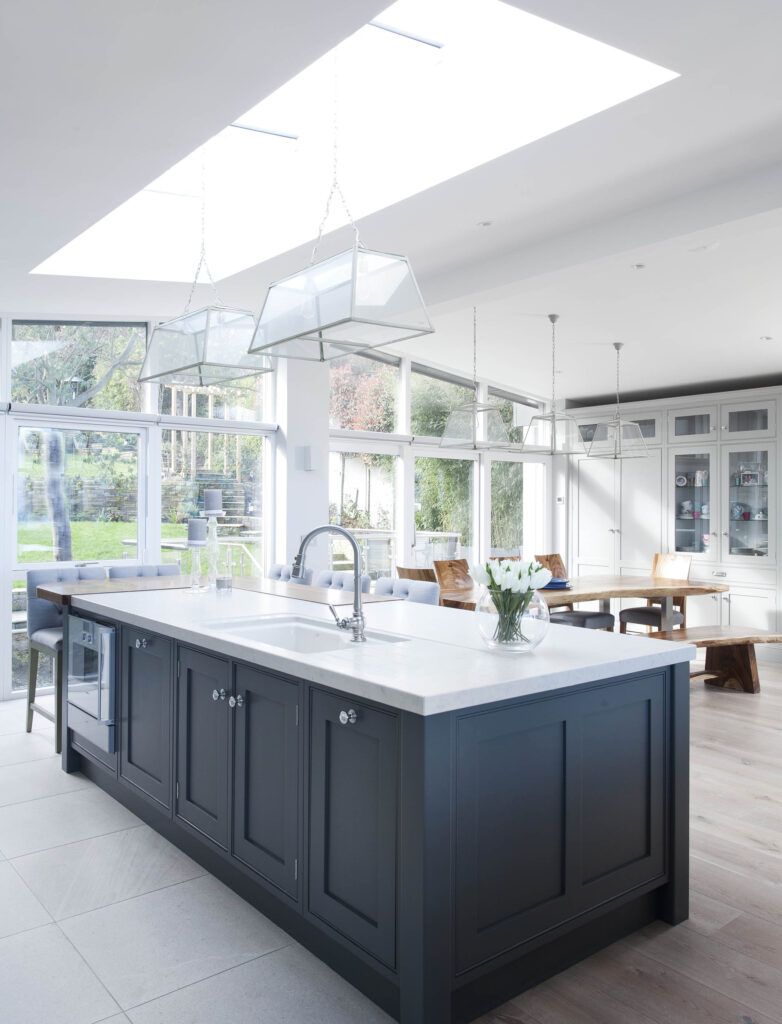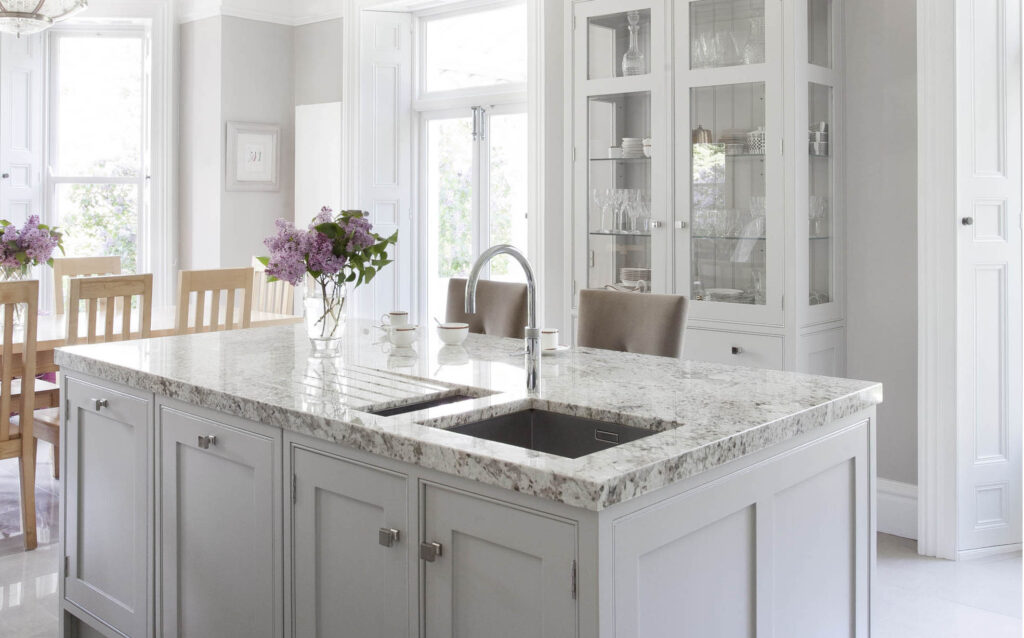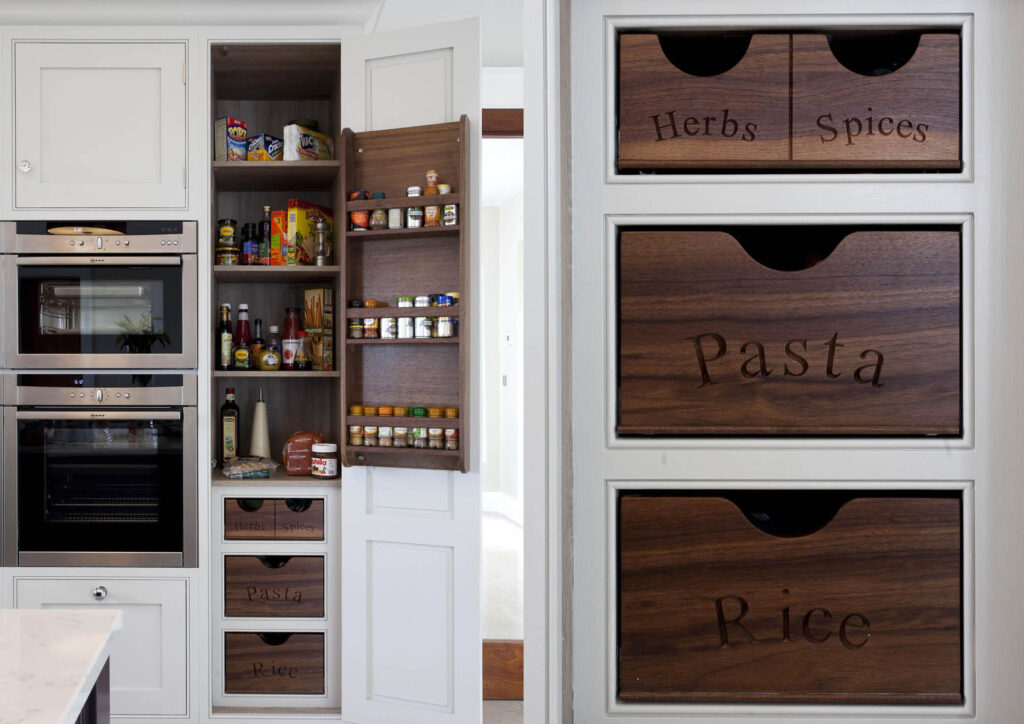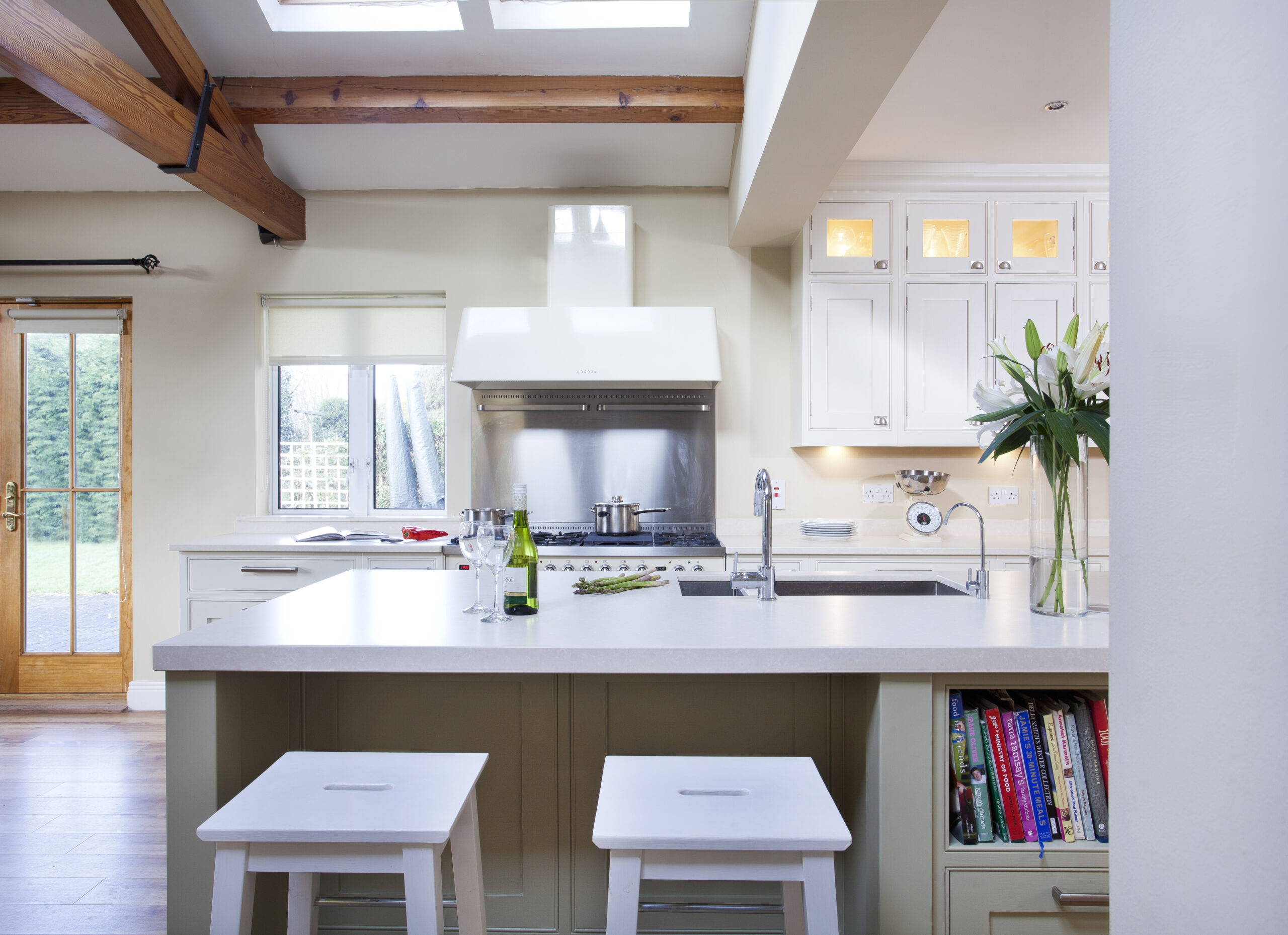The concept of sustainability is nothing new to us. After all, O’Connors of Drumleck is a third-generation family business, set in the beautiful Co. Louth countryside. We intend to be here for many years to come, and there’s no point thinking or talking long-term unless you act long-term also.
The same applies to your home, your kitchen, your design. Your investment should be enduring and contemporary and here our designers have the experience and imagination to suggest and incorporate features that will contribute to long term ecological viability and a healthy home. Here are the 9 steps to sustainable kitchen design.
1. Sustainably sourced materials

Sourcing your kitchen from a local manufacturer will ensure a smaller carbon footprint. Also, ask for sustainably managed and sourced raw materials, such as FSC timber which comes from forests that are carefully replanted and designed to benefit the economy of the regions in which they’re grown. Timber is one of the most environmentally friendly raw materials – see more on the British Woodworking Foundation.
2. Water Filters
Installing a water filter will eliminate your need for bottled water, quickly reducing the amount of plastic you recycle. Filtered water also has health benefits due to the removal of chlorine and other substances, whilst leaving the essential minerals. It tastes clean and fresh too, so you’re likely to drink more and become better hydrated! Read more about water filtration on CleanWater.ie.
3. Hot Water Taps
Increasingly popular, not only for convenience, but for the economic impact of heating water for exact requirements, for example if you’re just making a cup of tea that is all the water you use. Reducing both electricity and water losses, hot water taps are another step towards creating a more sustainable kitchen.
4. Segmented bins
Waste disposal remains a hot topic and is helped enormously by ease of use. Where possible, we recommend bins that have compartments for general waste, recycling and composting, or whatever your local requirements are.
5. Natural light

We always look to maximise the natural light in any room, including kitchens, from cabinet choices and layout to paint colour recommendations. This reduces the need for electricity and cuts down on supplier bills. We also ensure that task lighting is included, as you only need light in the areas where you are working or eating. An architect can help at the outset to suggest ways of increasing natural lighting from the building perspective.
6. Economical Appliances
Fast heating and cooling ovens and cooking surfaces that use minimal power, energy-efficient fridges and water saving dishwashers are all important elements to consider. Choosing premium appliances that last a long time is also good for your budget and the environment, reducing appliance waste and landfill. For more information on the energy labelling of your appliances, visit the SEAI website.
7. Natural materials

Using wood, stone and other naturally occurring materials can boost the health of your home. Choose materials with low or no VOCs (volatile organic compounds), i.e. toxins released into the air from some building materials such as certain paints, adhesives, composites and others. Over time, the molecules released will combine with nitrogen oxide in the air to cause particle pollution. As we now know after the turmoil of the pandemic, a well-ventilated home will further reduce the effects of VOCs (see below) and minimise the risk of infection from airborne bacteria and viruses.
8. Using space effectively

Perhaps less obvious than the other points, using space effectively means less materials in the build. “Using less to get more,” as Douglas Teiger of Abramson Teiger Architects puts it. Tips include selecting drawers rather than cupboards where possible, as drawers are more space efficient and better for storage. Also, corner cabinets that are well made will maximise the kitchen space and enable you to use every available nook.
9. Good ventilation
There’s a reason we tell our children to go out and get some fresh air! Indoor air is around five times more polluted than outdoor air, so ventilation is crucial for any healthy home. Gases and odours released while cooking or from surfaces in your home need somewhere to go, yet many homes are increasingly airtight with warmth being a priority for homeowners. A balance between sustainability through heat loss and good ventilation is the best result.
Thoughtful, long-term design

For many sustainable reasons, thoughtful and considered design choices will enhance both the value of your home and the daily quality of your life.
Create a kitchen and living space that connects your values to your home and aesthetics. Once you have installed a clever and efficient kitchen, there are plenty more ways that you can continue small daily steps towards a cleaner future.

